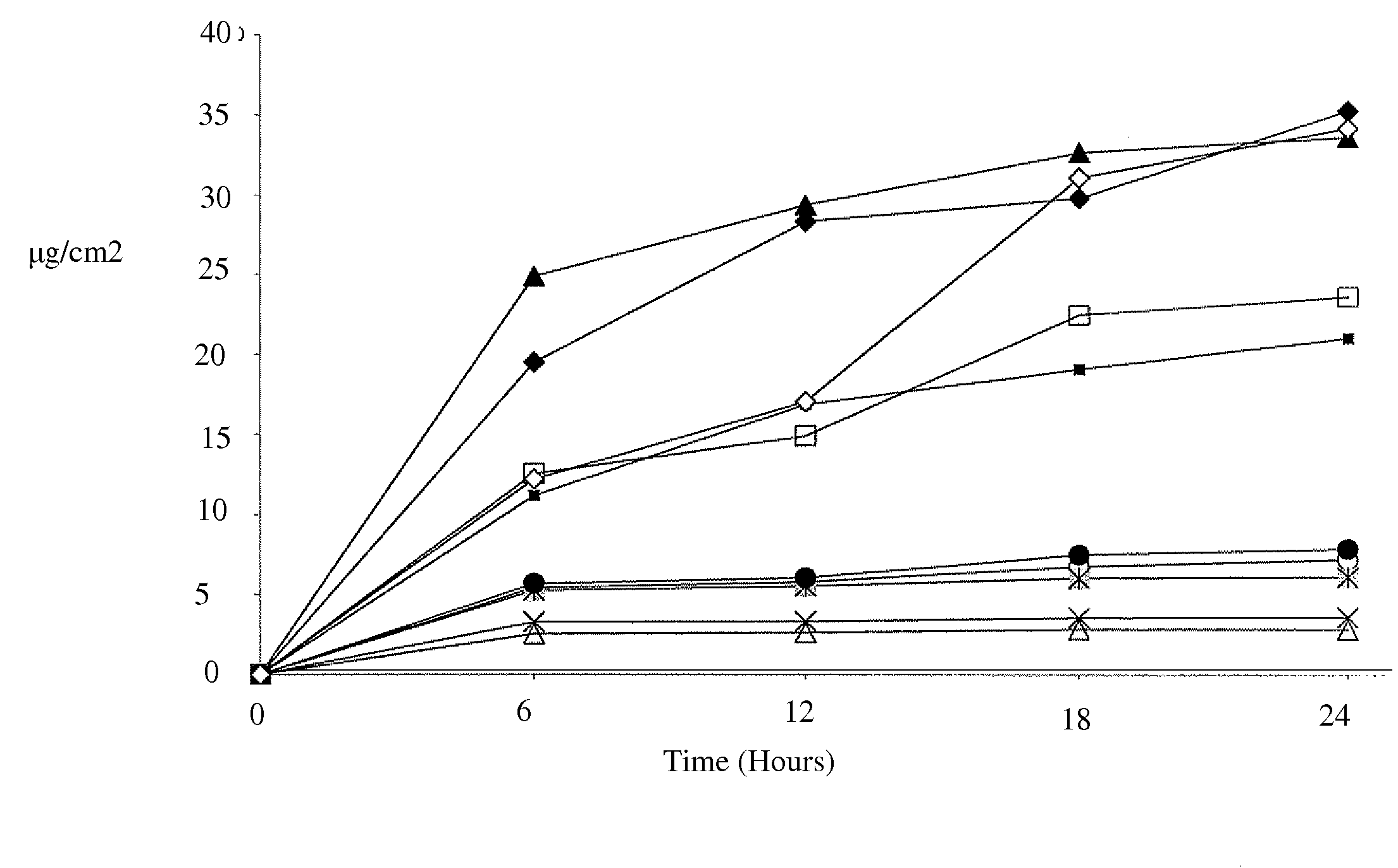High concentration local anesthetic formulations
a formulation and high concentration technology, applied in the field of formulations, can solve the problems of poor efficacy of nsaids, limited utility of classic analgesics, and affecting the effect of pain relief, so as to improve or inhibit pain, rapid onset of pain relief, and improve or eliminate pain
- Summary
- Abstract
- Description
- Claims
- Application Information
AI Technical Summary
Benefits of technology
Problems solved by technology
Method used
Image
Examples
example 1
Determination of Solubility and Compatibility of Lidocaine and Lidocaine HCl in Pharmaceutically Acceptable Topical Carrier
[0061]The primary goal was to develop a fast-acting topical product containing 40% Lidocaine as the Active Pharmaceutical Ingredient (API) with limited systemic exposure for the treatment of neuropathic pain.
[0062]Materials and Methods
[0063]The solubility and compatibility of lidocaine and lidocaine HCl in solvents typically used in topical pharmaceutical products was assessed in order to direct the formulation development efforts. The solvents were selected based on anticipated solubility parameters and solvent behavior, and their inclusion on the FDA approved Inactive Ingredient Guide (IIG). Additional attributes included the ability to accommodate a high level of drug while retaining adequate cosmetic properties, and the potential for a quick-drying product for application to the torso and face.
[0064]Initially, the solubility of lidocaine and lidocaine hydroc...
example 2
In Vitro Percutaneous Absorption of Lidocaine from Prototype Formulations Using Human Skin
[0074]Materials and Methods
[0075]Based on the results of Example 1, eight prototype formulations were then selected and submitted for evaluation in an in vitro Skin Penetration Study. The purpose of this study was to characterize the in vitro percutaneous absorption of the actives (lidocaine free-base or lidocaine HCl) from prototype formulations, compared to two control formulations (a compounding pharmacy product and a marketed patch, LIDODERM®), following topical application to excised human skin from elective surgery. Selection of the formulas to test in this study was based primarily on physical and chemical stability, a desire to include a wide range of dosage forms (creams, spray-type, foam, and gels) containing either lidocaine base or lidocaine hydrochloride, and to obtain a broad range in the delivery from the prototype formulations.
[0076]This study was conducted using procedures adap...
PUM
| Property | Measurement | Unit |
|---|---|---|
| time | aaaaa | aaaaa |
| solubility | aaaaa | aaaaa |
| storage temperature | aaaaa | aaaaa |
Abstract
Description
Claims
Application Information
 Login to View More
Login to View More - R&D
- Intellectual Property
- Life Sciences
- Materials
- Tech Scout
- Unparalleled Data Quality
- Higher Quality Content
- 60% Fewer Hallucinations
Browse by: Latest US Patents, China's latest patents, Technical Efficacy Thesaurus, Application Domain, Technology Topic, Popular Technical Reports.
© 2025 PatSnap. All rights reserved.Legal|Privacy policy|Modern Slavery Act Transparency Statement|Sitemap|About US| Contact US: help@patsnap.com


